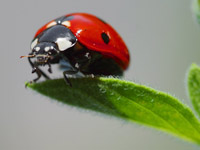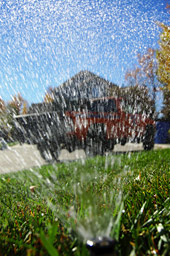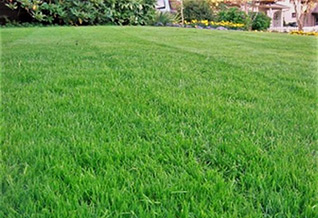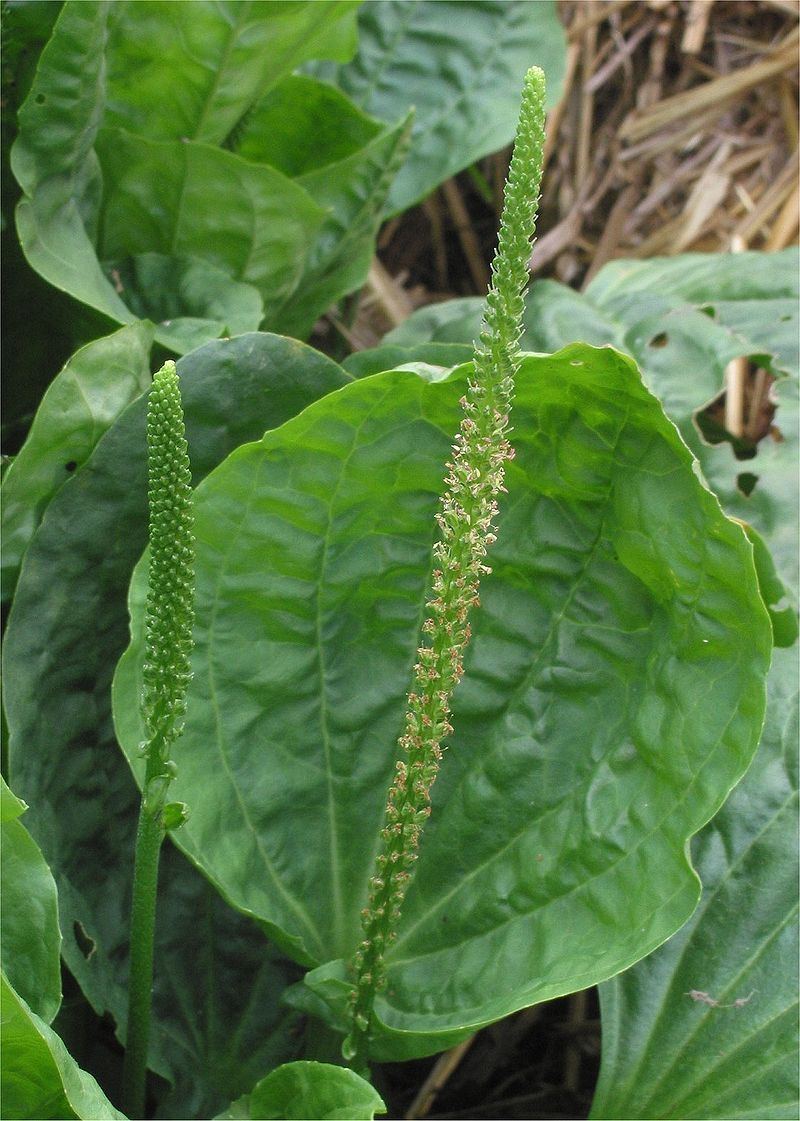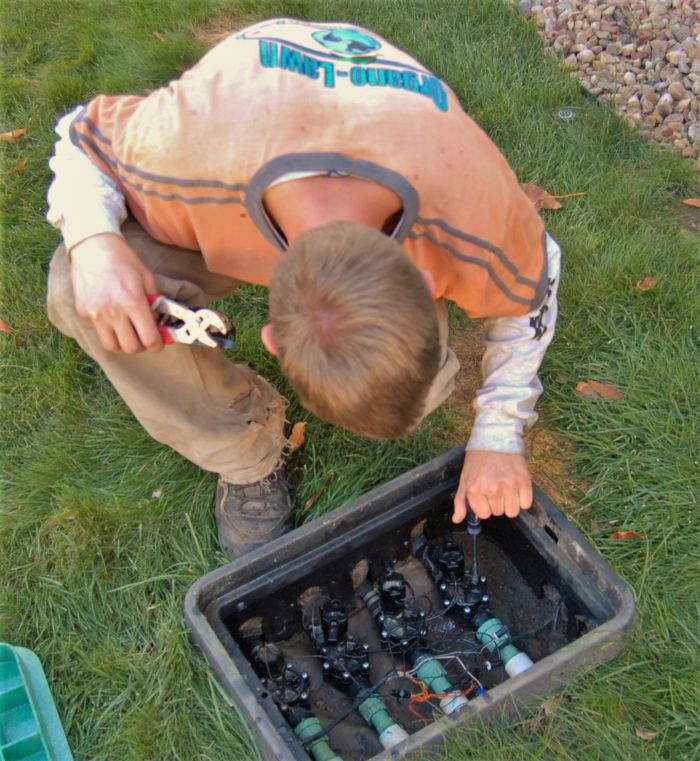Summer Lawn Care Tips
If you are on one of our full season programs your lawn will have the nutrients it needs with proper organic fertilization and organic weed control; however, those are only one aspect to a great looking lawn. Your lawn will only look great if the lawn is also being watered and mowed properly. Below are some great summer lawn tips to help your lawn survive the dry Colorado heat.Can you apply fertilizer in the summer?
This depends on what type of fertilizer is being applied. If the summer lawn fertilizer is 100% organic, it can be applied during the summer. This is because all of the nitrogen in the fertilizer is slow release organic nitrogen, which means it is only becomes available to the plant after the microbes in the lawn break it down. Therefore, a 100% organic fertilizer will never burn a lawn and it will stimulate beneficial microbial activity in the soil. A fast release or chemical fertilizer is derived from water soluble nitrogen and could burn a lawn if applied in the summer. Chemical fertilizers are typically derived from a salt base and therefore kill beneficial microbial activity in the soil.Lawn Mowing During the Summer
In addition to summer lawn fertilizer, proper cultural practices are a very important step in maintaining a healthy lawn. When we speak of cultural practices we mean proper mowing and deep and infrequent watering. In the summer you should mow the lawn on the highest setting of the mower. This is no joke and will help protect the lawn from heat and drought stress. The most common mistake most homeowners make is they mow too short. As appealing as the “golf course” look is, this is terrible for the lawn. It requires way too much water and frequent chemical fertilizer to achieve this look.You can still have a lush green lawn with organic products but it does need to be mowed tall and watered properly. Proper mowing means proper height to mow, proper frequency and proper lawn mower maintenance.How often should you cut your grass in the summer?
If the lawn is being watered according to the 1-2-3-2-1 lawn watering technique a lawn will need to be mowed once a week to ensure that you are not cutting off more than 1/3 of the grass blade at a time. This will avoid putting any additional stress on the grass when it’s already in the most stressful weather.Lawn Watering Schedule
In the summer the lawn needs to be watered 3 days a week and never any more than three days per week. Proper watering includes proper time of day for watering, proper duration based on the type of head and orientation to the sun, properly adjusting sprinkler head coverage, and proper frequency. To learn how to properly water a lawn check out our 1-2-3-2-1 guide.What could help my grass stay green during the summer months?
Making sure that your lawn is being watered deeply and infrequently in the spring is the best way to keep the lawn green during the summer months. Watering one day per week in the spring and following the 1-2-3-2-1 lawn watering technique will develop deep digging grass roots, which are more heat tolerant compared to shallow grass roots. Lawns with a living soil will also be more drought tolerant compared to a lawn with a dead soil. We recommend an application of Humate soil conditioner towards the middle of May to early June to help stimulate microbial activity and protect the lawn against heat and drought stress of the summer months.Keep an Eye Out for Crabgrass
Crabgrass is a light colored grass that germinates from late June through late August. Not to be confused with course tall fescue. It typically grows along the edges of the lawn near sidewalks or in thin areas. Crabgrass is an annual grass and needs to be treated before it goes to seed. If you control the crabgrass before it goes to seed then you will reduce your crabgrass problem for the following year. We use a product called Drive XLR8 to treat for Crabgrass.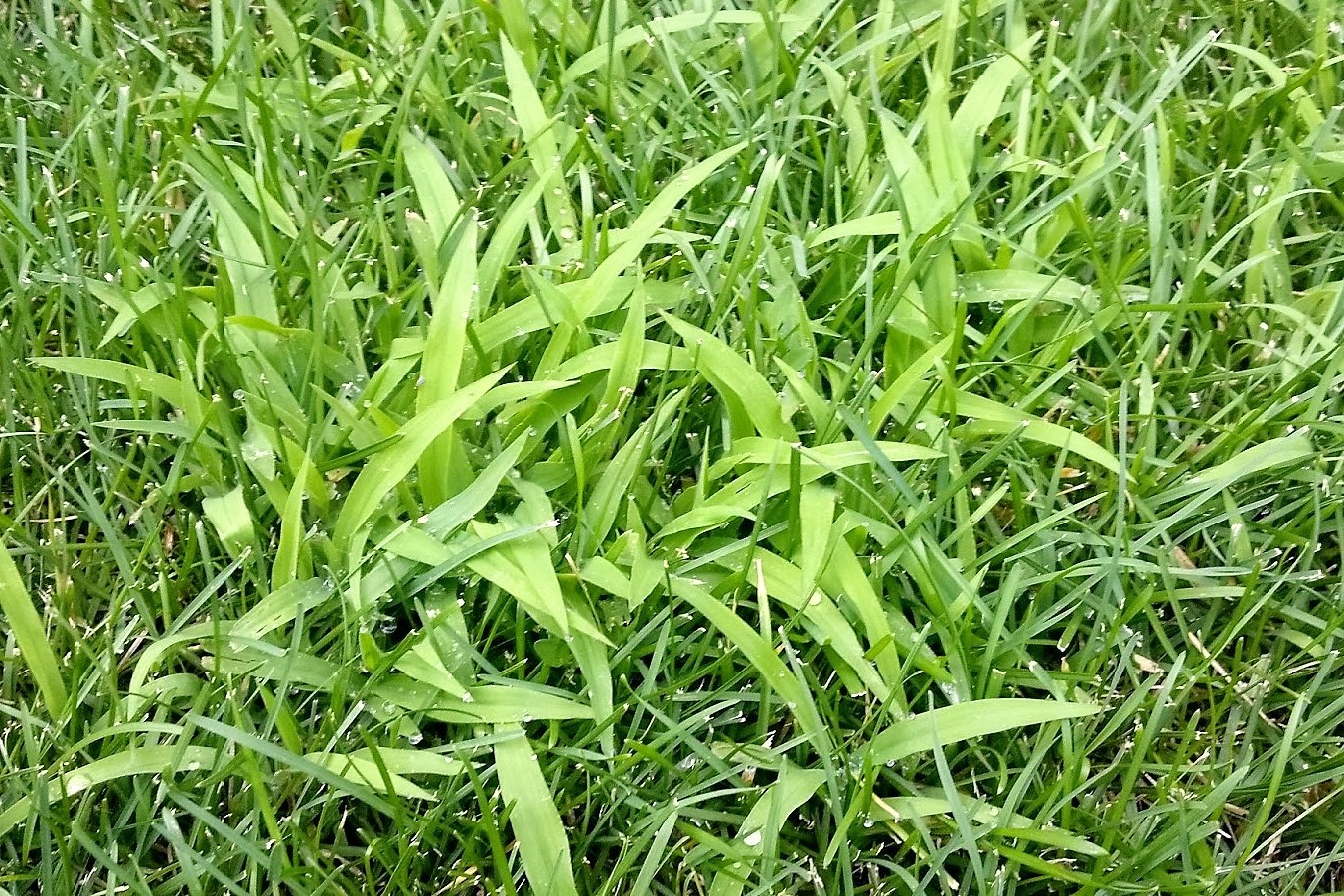
Common Lawn Disease and Lawn Fungus seen in the Summer
Ascochyta Leaf Blight/Dollar Spot Fungus is the most common lawn fungus that causes brown spots in the lawn during the hot summer months. Ascochyta/Dollar Spot is a symptom of shallow grass roots, which is caused by improper watering techniques or poor sprinkler coverage. To quickly get the lawn looking better we recommend making changes to the sprinkler schedule or fixing the sprinkler coverage problem. We also strongly recommend a treatment of humate soil conditioner to help the lawn recover more quickly.Weeds in Rock or Mulch Areas
During the hot summer months the weeds in the areas outside of the lawn can be very aggressive. If they are getting out of hand where you cannot keep up with them by hand weeding we recommend using Avenger which is our organic alternative to Roundup. Avenger is a wonderful product to use in the summer because it works so well and kills the weeds typically within 2 hours after application.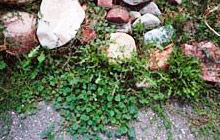
Insect Control for Trees
Trees get insect pressure from aphids and mites especially when temperatures are hot. It is important to get the trees treated if they are suffering from insect pressure. Insects can be extremely stressful on trees and can reproduce quickly causing damage to the tree resulting in stunted growth and increased susceptibility to disease and drought. Symptoms of aphid pressure include: curling of leaf tissue, a shiny sticky substance called honeydew on the leaf tissue, the presence of wasps, and insects feeding on the underneath side of the leaf tissue. Each aphid can reproduce up to 20 more aphids a day so if you have problems contact our office about having the Orthene deep root injection treatment for the infested trees. High risk trees for aphids include: Ash, Aspen (Very High), Birch, Cottonwood (Very High), Elm, Hawthorne, Honey locust, and Maple. Symptoms of mite pressure include: yellowing or browning of leaf tissue, and tiny insects crawling on the trees. Some mites are not visible to the naked eye and it is important to look for signs of stress. High risk trees for mite pressure include: Alder, Aspen, Cottonwood, Hawthorne, Honey locust (Very High), Hornbeam, Linden, and Willow. Note: All trees can get aphids and mites but these are the trees at the greatest risk. The Ladybug is a beneficial insect and eats aphids. Our tree treatments are injected into the trees root zone and therefore they do not harm beneficial insects. The treatment will only affect an insect that feeds on the leaf tissue of the tree.